For centuries, they’ve graced rooftops, not merely as decorative flourishes, but as surprisingly sophisticated instruments of meteorological observation and cultural expression. Historical weather vanes, far from being simple indicators of wind direction, reveal a fascinating interplay of art, science, and folklore. This article delves into the surprisingly consistent principles underlying their design, the evolution of their forms, and the rich lore that has accumulated around these iconic objects. We’ll explore how understanding the science of weather vanes illuminates not only past climates but also the ingenuity and beliefs of those who crafted and used them.
A History Rooted in Observation
The earliest known weather vanes weren’t the elaborate sculptures we often associate with the term. The very first examples, appearing around the 9th century, were remarkably simple – a vertical rod with a horizontal plane, often adorned with a cross or a stylized arrow. These rudimentary devices, typically mounted on church spires, served a practical purpose: to indicate the prevailing wind direction for liturgical ceremonies and to warn sailors of impending weather changes. The use of a cross also imbued the vane with religious significance, representing the winds as agents of God’s will.
The Romans, although not using vanes in the same form, understood the importance of wind direction, employing telltales – fabric streamers – to observe airflow. The transition to a rotating vane in the Middle Ages was a significant leap, allowing for continuous and precise indication of wind direction. The introduction of the cardinal directions – North, South, East, and West – marked a key development, establishing a standardized system for meteorological observation.
The Science of the Spin: Aerodynamics and Balance
The fundamental principle behind a weather vane’s operation is simple aerodynamics. The vane itself, often shaped like an arrow, a rooster, or a figure, is designed to catch the wind. Its larger surface area presents a greater resistance to airflow, causing it to pivot and align itself with the wind’s direction. However, the physics involved is more nuanced than it appears. The design must account for several factors:
- Surface Area and Shape: A larger surface area generally means greater sensitivity to even gentle breezes. The shape also influences the vane’s responsiveness; streamlined designs reduce drag and allow for quicker alignment.
- Balance: This is crucial. The vane must be perfectly balanced around a vertical axis to ensure free rotation. Any imbalance will introduce friction and prevent accurate readings. Early vanes relied on careful craftsmanship to achieve this balance, often using counterweights or precisely shaped components.
- Friction: Minimizing friction in the pivot point is paramount. Early vanes used simple spindles, but advancements included the use of bearings – initially made from wood and later from metal – to reduce resistance.
- Wind Resistance of the Body: The supporting structure and the body of the vane itself must offer minimal resistance to the wind, ensuring the arrow (or designated directional indicator) is the primary element responding to airflow.
The placement of the vane is also critical. It needs to be elevated above surrounding structures to avoid turbulence and ensure exposure to unobstructed wind flow. This explains their common location on rooftops and towers.
From Function to Flourish: The Evolution of Vane Design
Initially utilitarian, weather vanes gradually evolved into works of art. The rooster, a particularly popular motif, gained prominence during the Middle Ages, symbolizing vigilance and warning – a reference to the rooster’s crow announcing the dawn and potential dangers. This association stems from the Gallo-Roman tradition, where the rooster was a symbol of victory and guardianship.
The Renaissance and Baroque periods witnessed an explosion of creativity in vane design. Elaborate figures, often depicting mythical creatures, heraldic symbols, or even portraits, became commonplace. These vanes were frequently commissioned by wealthy individuals and institutions, reflecting their status and artistic tastes. The materials used also became more refined, with copper, brass, and iron being favored for their durability and malleability.

American weather vanes, particularly those produced in the 18th and 19th centuries, developed a distinct style. Silhouettes cut from sheet iron, often painted in bold colors, were a characteristic feature. Iconic American motifs, such as eagles, horses, and sailing ships, were frequently employed. These vanes were not merely decorative; they were often seen as symbols of American identity and prosperity.
The Symbolism of Directional Figures
The figures chosen to adorn weather vanes weren’t arbitrary. Each motif carried specific symbolic meaning:
- Rooster: As mentioned, vigilance, warning, and divine protection.
- Eagle: Strength, freedom, and American identity.
- Horse: Speed, power, and agricultural prosperity.
- Sailing Ship: Trade, exploration, and seafaring prowess.
- Dragon: Power, protection, and often a symbol of local lore.
- Arrow: Directness, purpose, and a literal indication of wind direction.
The choice of figure often reflected the owner’s profession, social status, or personal beliefs. A blacksmith might choose a horse, while a merchant might opt for a sailing ship. The weather vane, therefore, became a personalized statement, communicating something about the owner to the community.
Decoding the Lore: Weather Vanes and Superstition
Throughout history, weather vanes have been intertwined with folklore and superstition. Beliefs about the significance of the vane’s direction and behavior varied from region to region. For example, in some areas, a vane pointing north was considered an omen of cold weather, while a vane pointing south was believed to foretell warmer temperatures.
Stories also arose about the vane itself being possessed by spirits or having the power to influence the weather. Some believed that a broken vane brought bad luck, while others saw a vane spinning wildly as a sign of an impending storm. These beliefs, while not scientifically grounded, reflect a deep-seated human desire to understand and predict the forces of nature. The vane acted as a focal point for these anxieties and hopes.
The Materials & Craftsmanship: A Testament to Skill
The longevity of many historical weather vanes is a testament to the skill of the artisans who crafted them. Materials were chosen for their durability and resistance to the elements.
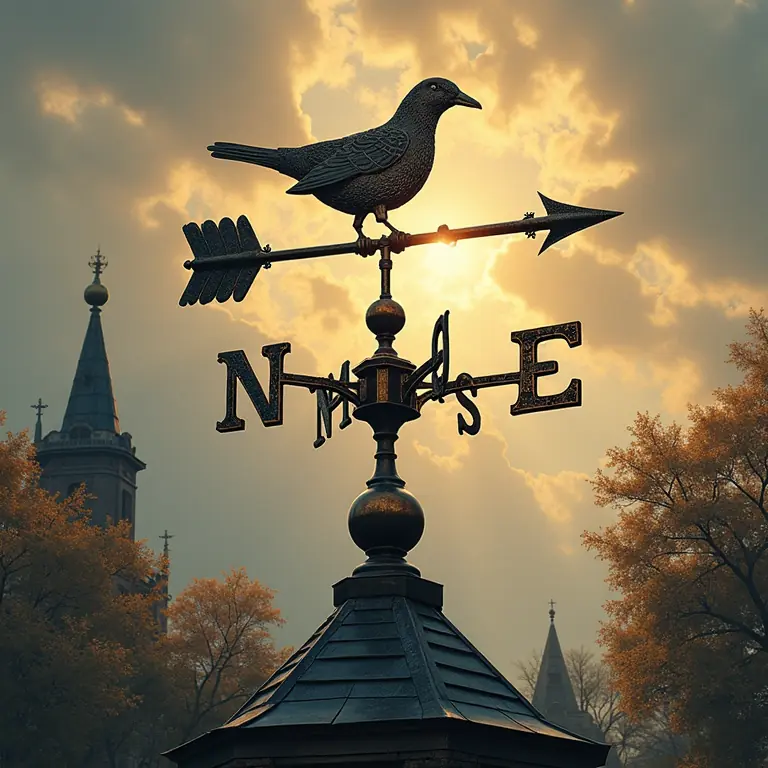
- Copper: Highly resistant to corrosion, often used for intricate designs.
- Brass: Durable and easily polished, popular for its golden hue.
- Iron: Strong and readily available, often used for structural components and silhouettes.
- Wood: Used for the vane’s support structure, often treated to resist rot.
The creation of a weather vane involved a range of skills, including metalworking, soldering, painting, and carpentry. Artisans meticulously shaped and assembled the components, ensuring precise balance and smooth rotation. The level of detail and artistry often reflected the vane’s cost and the owner’s social standing.
Weather Vanes and the Rise of Meteorology
While early weather vanes were used primarily for practical purposes and superstitious beliefs, they also played a role in the development of meteorology. Observations of wind direction, recorded over time, provided valuable data for understanding weather patterns. Early meteorologists used weather vane readings, along with other observations, to develop basic forecasting techniques.
The standardization of cardinal directions on weather vanes facilitated the creation of wind roses – circular diagrams showing the frequency and direction of wind flow. These wind roses, based on data collected from weather vanes, provided a visual representation of local climate conditions.
Modern Interpretations and Preservation
Today, historical weather vanes are highly sought-after collectibles and valuable pieces of art. They offer a unique glimpse into the past, revealing the beliefs, skills, and aesthetic sensibilities of previous generations. Preserving these artifacts is crucial for maintaining our cultural heritage.
Conservation efforts focus on stabilizing the materials, repairing damage, and restoring the vane’s original appearance. Museums and historical societies play a vital role in preserving and exhibiting these treasures, educating the public about their history and significance.
The Enduring Appeal of a Timeless Icon
The weather vane, in its various forms, continues to captivate and inspire. It’s a symbol of adaptability, resilience, and a connection to the natural world. Its enduring appeal lies in its ability to blend art, science, and folklore, offering a glimpse into the rich tapestry of human history.
Understanding the surprisingly consistent science behind these objects – the aerodynamics, the balance, the material choices – enhances our appreciation for the ingenuity of their creators. And exploring the lore and symbolism surrounding them deepens our understanding of the cultures that embraced them.
If you’re interested in learning more about the fascinating intersection of science and history in everyday objects, you might also enjoy exploring the science behind vintage spectacle frames, antique puzzle jugs, historical dye recipes, antique compass design, and early firework composition.
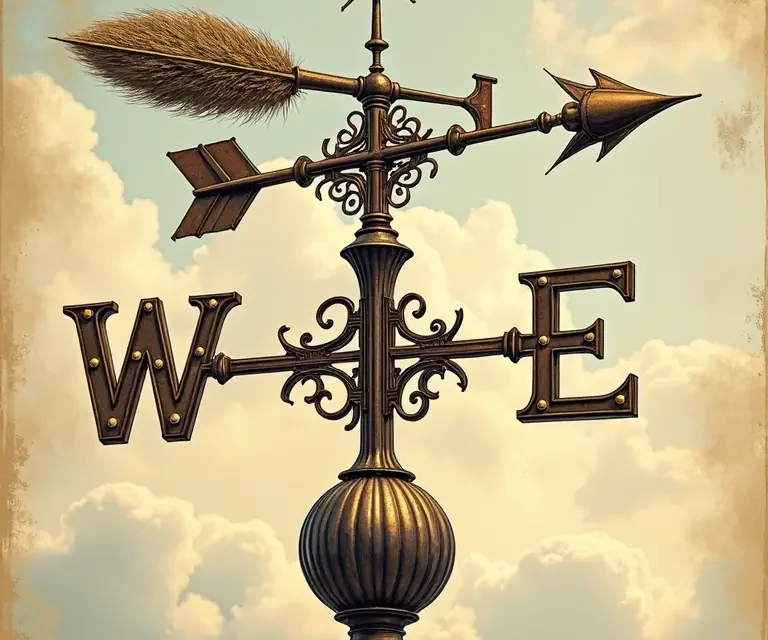

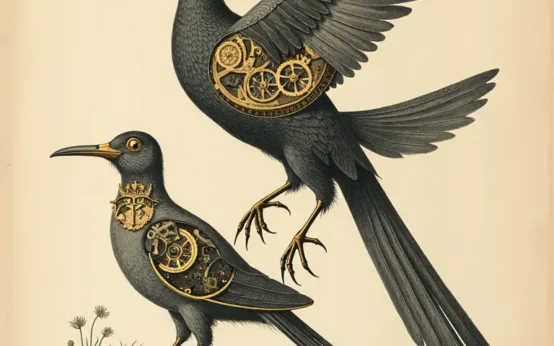 The Curious Mechanics of Automaton Birds: A History of Feathered Clockwork
The Curious Mechanics of Automaton Birds: A History of Feathered Clockwork  The Curious Mechanics of Celestial Globes: Mapping the Heavens in Miniature
The Curious Mechanics of Celestial Globes: Mapping the Heavens in Miniature 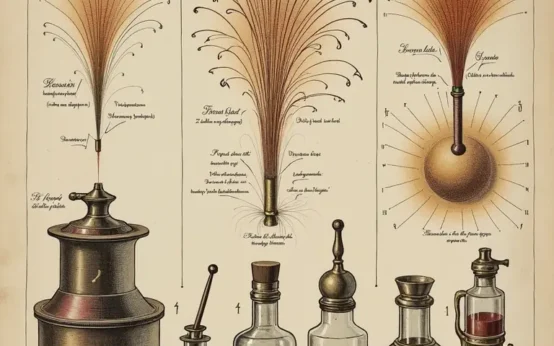 The Unexpectedly Consistent Science of Early Firework Composition: Alchemy, Aesthetics & Aerial Displays
The Unexpectedly Consistent Science of Early Firework Composition: Alchemy, Aesthetics & Aerial Displays 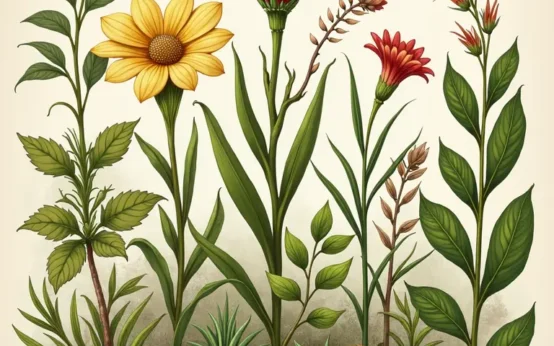 The Surprisingly Consistent Logic of Traditional Herbal Remedies: Beyond Folklore, a History of Observation
The Surprisingly Consistent Logic of Traditional Herbal Remedies: Beyond Folklore, a History of Observation  The Surprisingly Consistent Science of Early Map Projections: Distorting the World to Understand It
The Surprisingly Consistent Science of Early Map Projections: Distorting the World to Understand It  The Surprisingly Consistent Science of Candle Flame Dynamics: A History of Light, Wax, and Atmospheric Chemistry
The Surprisingly Consistent Science of Candle Flame Dynamics: A History of Light, Wax, and Atmospheric Chemistry